Original Li Yuheng Southern Metropolis Observer
Li Yuheng, IBDP Chinese teacher for international courses
The full text is more than 3900 words, and it takes about 8 minutes to finish reading
Both the “social division of labor theory” and the “big brother” construction theory are in the past. In modern society, what is needed is a combination of liberal arts and sciences, and integrated talents who can comprehensively use all aspects of knowledge.
Rather than indulging in the unrealistic disputes over the arts and sciences, it is better to think about whether our current education has cultivated children’s ability to face modern issues. The comprehensive educational significance of the liberal arts and sciences is to help students build a variety of frameworks for viewing problems, consider the rationality of solutions from different perspectives, weigh the pros and cons of all parties, and assume their responsibilities.
Recently, the official WeChat account of the central bank published a working paper entitled “Awareness of my country’s Population Transition and Countermeasures”. The paper was written by four PhDs in economics. One of the reasons for the middle-income trap is that there are too many liberal arts students”, causing an uproar.
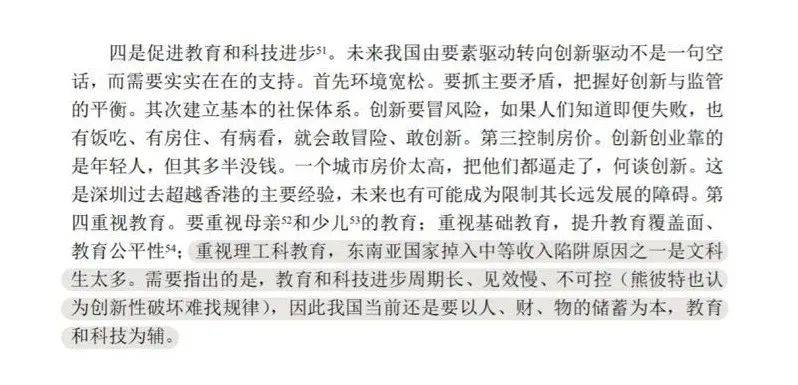
▲ The central bank’s working paper “Awareness of my country’s Demographic Transition and Countermeasures” puts forward at the end that “we must attach importance to science and engineering education. One of the reasons why Southeast Asian countries fall into the middle-income trap is that there are too many liberal arts students”, which caused an uproar. © Official website of the People’s Bank of China
This view has caused many netizens to discuss the pros and cons of liberal arts students in personal job promotion, social and economic development, and so on. Liberal arts students have a long history of despising each other. There is a saying in “Siege” that “science students look down on liberal arts students”. Under the background of pursuing the development and revitalization of science and technology, science students often occupy a certain high ground, but the right to speak is usually in the hands of liberal arts students. The two sides are divided into camps, you come and I go, arguing against each other. However, are things really so clear-cut?
Not to mention that the economics studied by the four Ph.Ds is regarded as liberal arts in the current discipline classification of most universities. If their aforementioned views are valid, does it mean that the four PhDs in economics themselves are “superfluous”? Just from the current situation and trend of education reform, how do researchers accurately define liberal arts students and science students? Dividing talents into liberal arts students and science students, and judging whether talents are beneficial to national development based on their disciplinary background is worthy of reflection.
▌The current education trend is that the arts and sciences are not divided into subjects
The division of liberal arts and sciences is an education system implemented in some countries and regions. The teaching courses are divided into liberal arts and sciences, allowing students to choose and conduct separate education. In the context of Chinese or the Chinese character cultural circle, the liberal arts (or the full name of humanities and social sciences) refers to the subjects of politics, economics, culture and other related knowledge related to human thoughts; while the sciences are actually “science and engineering” The abbreviation is biased towards natural sciences and technology, where science includes mathematics, physics, chemistry, biology and other natural science subjects. The engineering disciplines include engineering disciplines such as machinery, civil engineering, and architecture. Although it is a collective term, there is a difference between science and engineering. The science subjects focus on theoretical research, and the engineering subjects focus on practical operations. Or in other words, “science trains scientists, engineering trains engineers.”
The sub-discipline of liberal arts and science is a historical product. Lu Xiaodong, the deputy dean of Yuanpei College of Peking University, pointed out: “The ideological foundation of the sub-discipline of liberal arts is Adam Smith’s theory of social division of labor. , It can improve the efficiency of the whole society. The direct reason for the implementation of liberal arts and sciences after the founding of the People’s Republic of China is that the new China fully imitated the era of the former Soviet Union’s “big brother”—the college entrance examination system and the higher education system are also inevitable.”
More than two hundred years have passed since the publication of the book “The Wealth of Nations”, which put forward the “Social Division of Labor Theory”. With the maturity of modern pedagogy, the development concept of putting people first rather than treating people as tools is deeply rooted in the hearts of the people, and the division of arts and sciences has been more and more questioned. The current education system has begun to reform such divisions, such as in the college entrance examination. Cancel the traditional distinction between liberal arts and science.
With the expansion of the pilot reform of the college entrance examination, Shanghai and Zhejiang have no distinction between liberal arts and sciences since 2017; Beijing, Tianjin, Shandong, and Hainan have no distinction between liberal arts and sciences since 2020; Fujian, Hubei, Jiangsu, Guangdong, Hunan, Hebei, Liaoning, Chongqing Starting from 2021, the reform will break the limitations of simple division of liberal arts and sciences, and give students more autonomy in subjects through the “3+1+2” model. It can be said that the direction of the comprehensive reform of the college entrance examination is to abolish the restrictions on the traditional arts and sciences, encourage students to explore personalized learning paths, and cultivate more comprehensive talents.
As far as the IB International Baccalaureate Organization course I teach, the academic training at the high school level also does not simply distinguish the characteristics of students’ liberal arts and sciences, but requires students to choose six specific courses from six subject groups for research. The subject groups are language and literature (mother tongue), language acquisition (second language/foreign language), individual and society (such as history, economics, philosophy, etc.), science (physics, chemistry, biology, etc.), mathematics, and art. Taking into account the characteristics of different individuals, students can choose an additional course in the first five subject groups to replace the art course.
This kind of curriculum is similar to the elective mode of American College of Arts and Sciences, aiming to cultivate students’ comprehensive ability. In order to open up students’ understanding and knowledge of different disciplines, TOK Theory of Knowledge will guide students to reflect on the nature of knowledge and explore how humans obtain knowledge that we take for granted (how we know what we claim to know).
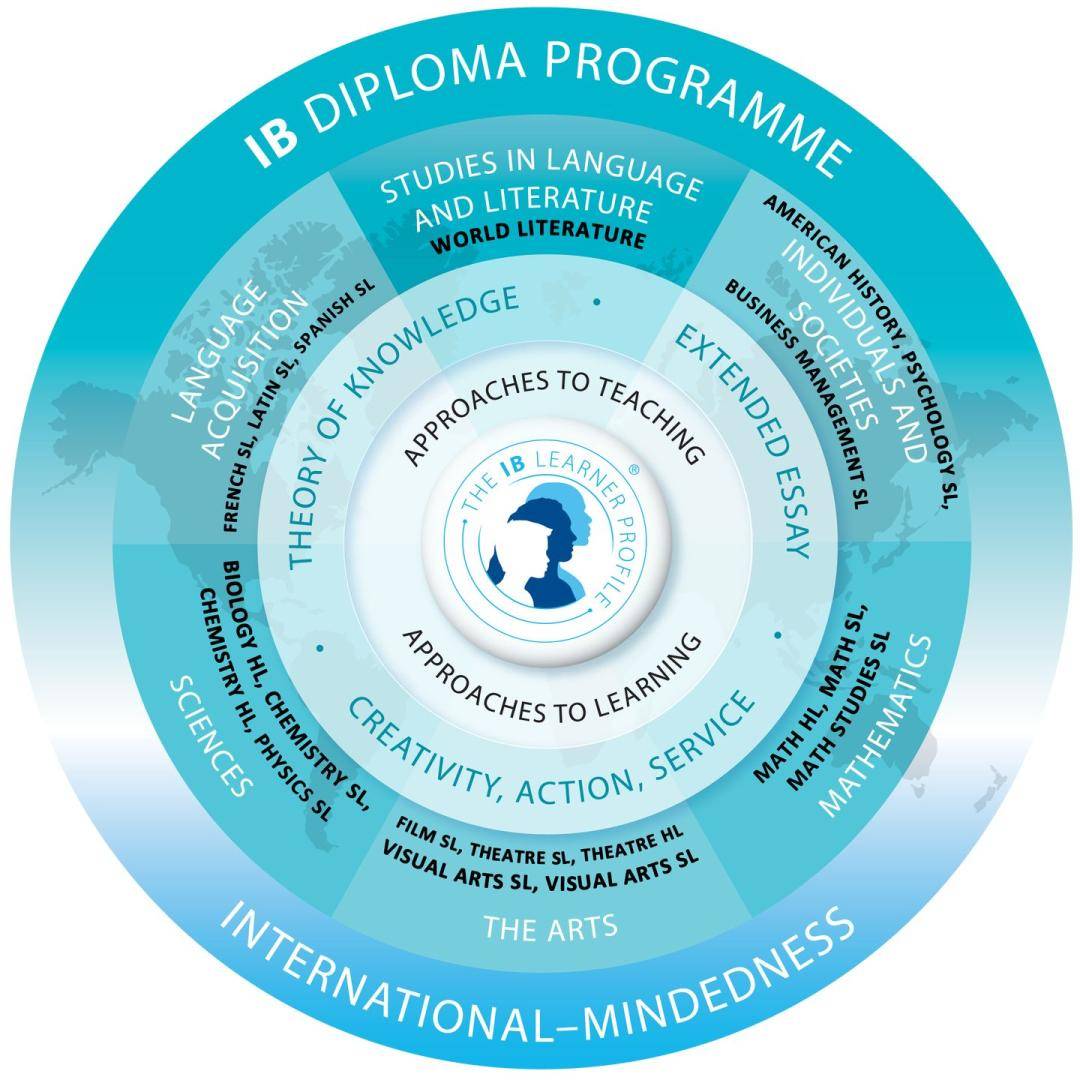
▲ The picture shows the IBDP International Baccalaureate Organization’s pre-university curriculum framework. © Author’s picture
In fact, before the division of liberal arts and sciences in middle schools, many majors were already integrated in liberal arts and sciences when enrolling students, such as journalism, economics and law (where the four Ph.Ds are located) and so on. For some traditional liberal arts majors, practitioners have realized the significance of interdisciplinary research and study for the cultivation of compound talents.
Taking the School of Journalism of Fudan University as an example, the “2+2 undergraduate teaching and training reform” implemented in 2018 allows undergraduates to rely on eight majors including computer information technology for wide-caliber training in the first two years, and enter the training of journalism and communication in the next two years. , So as to better adapt to the needs of the current development of the news dissemination industry. It is conceivable that a news talent who is good at new media technology and data analysis cannot be simply defined as a “liberal arts student”. Economics requires not only the use of a large number of mathematical tools for data analysis, but also a series of traditional “liberal arts” content such as consumer preferences, macro planning, and information feedback. Not to mention the current minor and dual degree policies provided by the university, allowing students to cross the boundaries of liberal arts and sciences and learn what interests them outside of their majors.
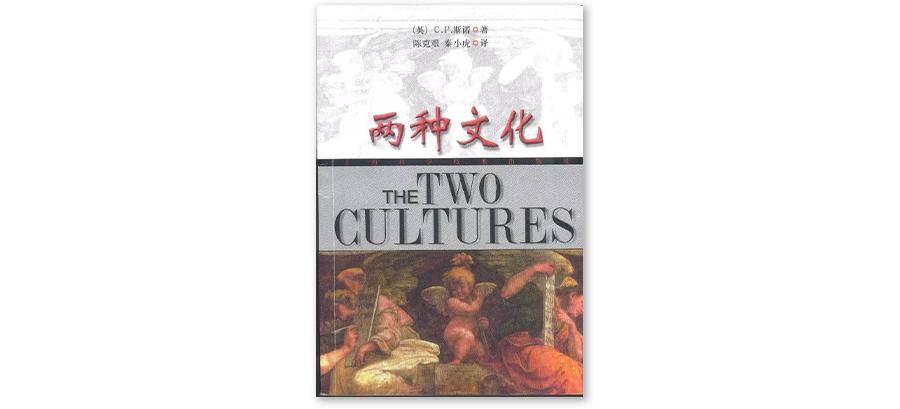
▲ “Two Cultures” is the first part of an influential speech delivered by British scientist and novelist CP Snow in 1959. In the same year, it was published as “Two Cultures and Scientific Revolutions” in book form. The main argument in the book is that science and humanities, which represent “the intellectual life of the entire Western society,” have been divided into “two cultures”, and this division is the main obstacle to solving world problems.
▌Art and science sub-subjects do not meet the needs of realistic problem-solving
Under the modern background of diversified demand for talents and encouragement of individualized development and training of students, the simple division of students into liberal arts students and science students, and even the judgment that “the liberal arts students misunderstood the country” has already ignored the context of the times. As mentioned earlier, both the “social division of labor theory” and the “big brother” construction theory are in the past. In modern society, what is needed is a combination of liberal arts and sciences, and integrated talents who can comprehensively use all aspects of knowledge.
The current world is facing unprecedented changes, especially when the shadow of the new crown pneumonia epidemic still looms over the world. The work and lifestyle of billions of people have changed, and the global economic recovery is still full of uncertainties. Problems such as medical support, drug R&D and distribution, accurate transmission of information, the impact of the epidemic on the economy and the intensification of the gap between rich and poor in society, racial conflicts and even conflicts caused by the reduction of living space are not a single traditional liberal arts or science knowledge that can be easily resolved. of.
Take the recent vaccination issue as an example. The development and experimental production of medical vaccines are based on scientific knowledge, and the promotion and management and distribution rely on language and social science methods. Individuals’ fear and rejection of vaccines cannot be resolved automatically by the experimental data of vaccines, and they need to be communicated and persuaded through empathy cultivated in the humanities.
Similarly, the progress of global epidemic prevention cannot be automatically succeeded only through the sales of pharmaceutical companies’ products, but also through coordination within the country and mutual assistance and cooperation between countries to ensure the fair distribution of vaccines. It can be seen that in solving problems, the social humanities and the science and engineering experimental disciplines are not originally opposed or the relationship between two alternatives, but to cooperate to achieve their goals.
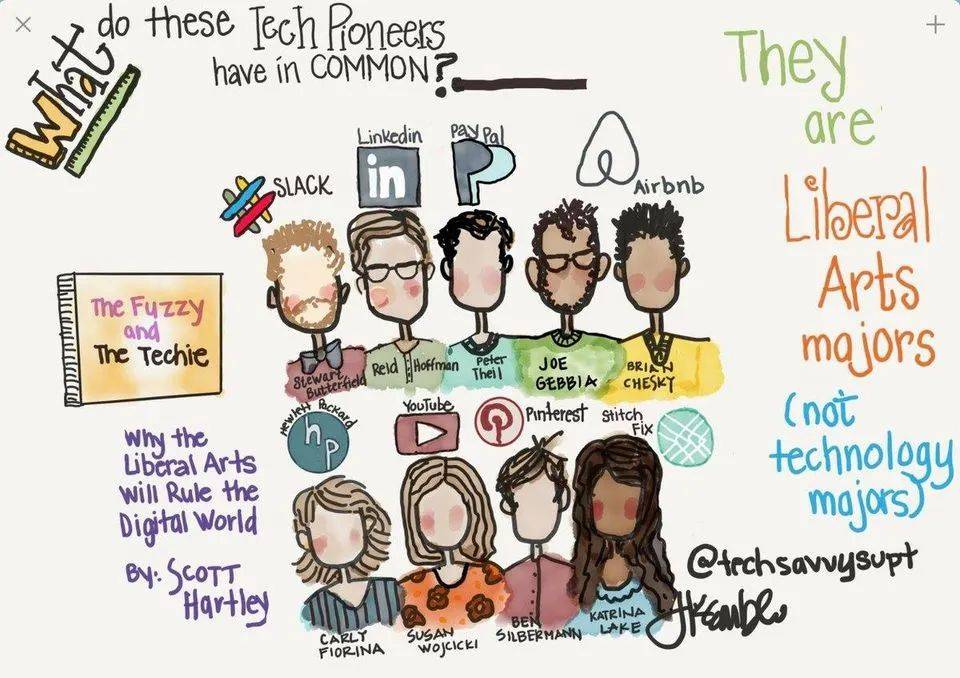
▲In solving problems, the social and humanities and the science and engineering experimental disciplines are not in opposition or an alternative relationship, but work together to achieve their goals. © BW Education
▌What kind of people and abilities should be cultivated by education?
Rather than indulging in the unrealistic disputes over the arts and sciences, it is better to think about whether our current education has cultivated children’s ability to face modern issues.
In the current era of high-speed information, when the boundaries of knowledge continue to expand, global challenges are everywhere. In education, it is better to cultivate students’ “meta” ability to analyze problems, solve problems, and express effectively than masters of liberal arts and sciences. Specific knowledge is more important.
When children are studying science subjects, the teacher no longer keeps an eye on test scores, repeats exercises, and strengthens the application of formulas in different exercises, but allows students to train their thinking methods on the basis of knowledge and guide them to face For complex problems, transfer the experimental methods you have experienced in scientific learning, such as variable control and observation, and refine seemingly indissoluble complex problems into manageable modules, so as to think one by one and break each one. Maybe this is the case. The meaning of science learning.
Students can and must experience scientific experiments in person to truly appreciate the simple and orderly scientific process: observing phenomena, asking questions, setting hypotheses, testing hypotheses, and sharing results. Learn what is evidence-based, scientific thinking and logic. In the cycle, human cognition is constantly updated.
However, in the process from analyzing problems to solving problems, especially when making decisions, the data and facts contained in scientific discussions should not be the only yardstick. Even the efficiency of input and output in economics is not the entire decision. According to the basis, it is also necessary to take into account the ethics and humanistic care cultivated by the liberal arts.
Taking the discharge of nuclear waste water from the Fukushima Daiichi Nuclear Power Plant into the sea as an example, the report submitted by TEPCO to the World Atomic Energy Agency (IAEA) included deep underground pumping, mortar solidification treatment and then burial, electrolysis, evaporative release, The cost of these five plans for discharging into the sea ranges from tens of billions of yen to hundreds of billions of yen. In contrast, discharging the sea only requires a few billion yen. If we do not learn from the historical nuclear accidents of the United States, the Soviet Union and other countries, and do not consider the safety of marine life and the human rights of citizens, and only make this choice from the perspective of price, it will inevitably bring about possible nuclear pollution and certain international tensions. More far-reaching issues. The comprehensive educational significance of the liberal arts and sciences is to help students build a variety of frameworks for viewing problems, consider the rationality of solutions from different perspectives, weigh the pros and cons of all parties, and assume their responsibilities.
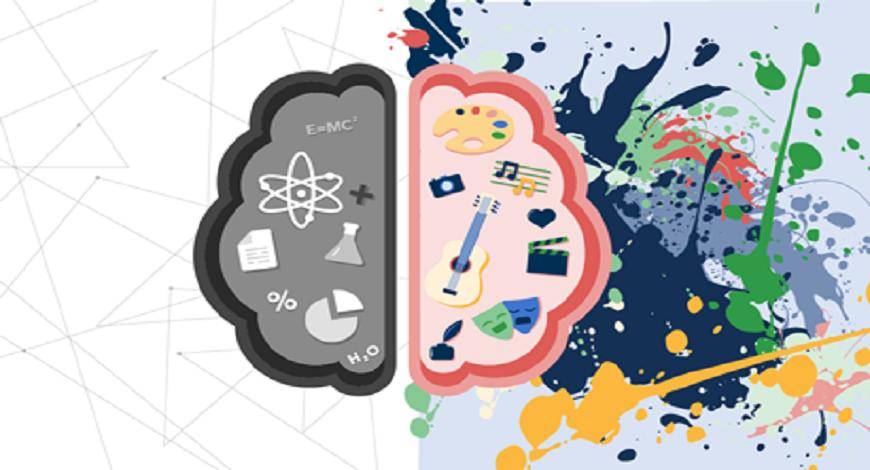
▲ The comprehensive educational significance of the liberal arts and sciences is to help students build a variety of frameworks for viewing problems, consider the rationality of solutions from different perspectives, weigh the pros and cons of all parties, and shoulder their responsibilities. © BW Education
Some people may say that thinking about issues forward and backward will lead to hesitation, indecision, delay in making decisions, and missed opportunities for action. But this is exactly what scientific disciplines can strengthen the balance. It can help people make decisions when information is uncertain. New scientific theories always require new experimental designs for continuous testing, and creating new experiments can often activate original cognition, improve theoretical connotations, and extend more experiments in the future to help us understand current problems.
Science is precisely the process of setting models, making decisions, and constantly improving on the basis of inadequate information. Just like the choice when life is at a fork in the road, no one can fully grasp the information, but if the individual can master the analysis and action, reflect on the improvement Ability, face every choice with a positive attitude, so you don’t have to worry about one step wrong or wrong step. This is scientific literacy and scientific mentality.
In addition to individual choices, important decisions of companies, society, and the country often require collective decisions. At the same time, many decisions involve multiple interests, and any decision must have its beneficiaries, losers, and cost payers. Then, how to weigh the interests of all parties and how to persuade different people to compromise with each other to achieve the greatest common divisor. It will inevitably test the individual communication and expression skills cultivated by the humanities, the empathy and coordination of the interests of all parties.
We often agree that the training basis of the former lies in the reading and writing of language and literature subjects. Through studying various writing methods and content, students explore their expression effects, thereby improving their accurate expression level. The latter needs to broaden one’s horizons and perspectives and achieve diversity and tolerance through reading in history, politics, and literature.
However, we ignore that the quantitative thinking and argumentation methods that scientific disciplines value can also help to improve the individual’s ability to communicate and persuade: how to use quantitative data to analyze and persuade others to accept their opinions? How to distinguish the validity of the argument and avoid selective data use or imperfect logical chain? How to explain the benefits and costs of all parties reflected in the data? If researchers can develop such abilities in the process of receiving liberal arts education, they will not easily come to the conclusion that “one of the reasons Southeast Asian countries fall into the middle-income trap is that there are too many liberal arts students”.
*Welcome, the submission email is [email protected]; this article has been added, and the excellent message will have the opportunity to get a book of (Purui Culture Communication).
Original title: “Artistic students or science students, which one is the direction of education and training?” 》
Read the original

























































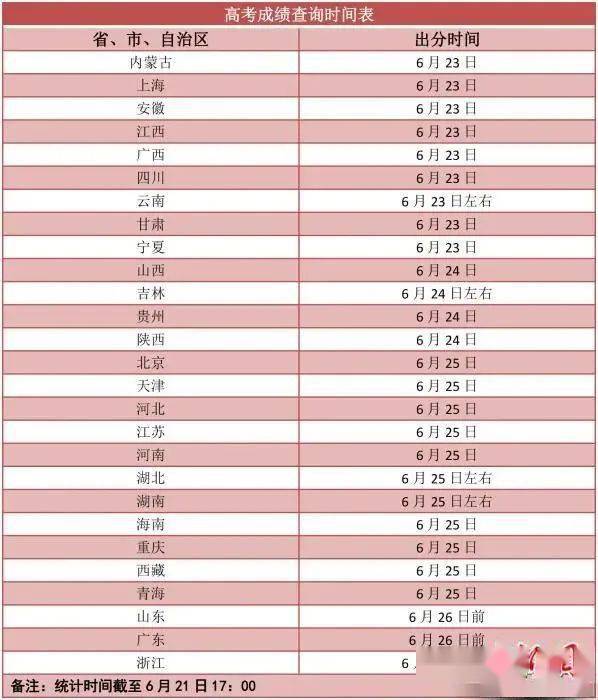



You must log in to post a comment.